This is the first blog post for NanoMatriX’s AI Learning and Awareness series.
Today’s Brands have enough: design and build great products, market them, increase their profits, and handle online visibility. The last thing they want to struggle with is finding their hard work wasted by some counterfeiter committing intellectual property theft.
Sadly, on average, brands lose $225 billion to $600 billion annually to these counterfeiters. This figure will increase over the years unless brands leverage the power of artificial intelligence and machine learning to protect their products and intellectual property. But how can AI and ML be beneficial in safeguarding a brand’s intellectual property?
In this article, you will learn what AI and ML models are and how they can help protect products. So, let’s get started:
What are Machine Learning and Generative AI?
Machine learning and artificial intelligence are two distinct terms often used interchangeably. Artificial Intelligence is a broad term that covers machine learning and deep learning, while Machine learning is only a branch of AI.
Artificial Intelligence (AI) is a term for computer software that mimics human cognition to learn and perform complex tasks. AI includes everything from smart assistants to robotic vacuum cleaners, self-driving cars, natural language processing, and robotics. ChatGPT is an example of an AI model.
Machine learning (ML) uses algorithms trained on data to produce adaptable models to perform complex tasks without explicit instructions. Machine learning aims to teach a machine how to perform a specific task and provide accurate results by identifying patterns. Speech recognition, facial recognition, traffic predictions, and pattern recognition are all employed using ML models.
Types of AI and ML Categories
Artificial Intelligence and machine learning have various categories some of which are as follows:
Supervised Learning:
Supervised learning is a type of machine learning where the model is trained on a labeled dataset. It’s like learning with a teacher (the labels). The model makes predictions based on this training and is then corrected by the teacher, hence the term ‘supervised’.
Unsupervised Learning:
Unsupervised learning in artificial intelligence is a type of machine learning that learns from data without human supervision. The model is given a dataset without any labels or categories and must find patterns and relationships within the data itself.
Generative AI:
Generative AI (genAI) is a broad term describing any type of artificial intelligence (AI) that can produce new text, images, video, or audio clips. Technically, Generative AI learns patterns from the training data and then generates new, unique outputs with the same statistical properties. Generative Adversarial Networks (GANs) and Generative Pre-Trained Transformer (GPTs) are examples of generative AI.
Reinforcement Learning:
Reinforcement learning (RL) is a machine learning (ML) methodology that instructs software in decision-making for optimal outcomes. It works similarly to humans’ trial-and-error learning process to achieve their goals.
MODELS USED IN AI
Computer Vision Models
AI leverages various models within Computer Vision to interpret and process visual data. Image Recognition models classify and identify visual content, Object Recognition and Tracking models locate and monitor specific objects, and Face Recognition models authenticate individuals by analyzing facial features. Emotion Recognition models discern emotional states, Optical Character Recognition (OCR) extracts text from images, and Pose Estimation models interpret body postures. These models collectively enable machines to understand and respond to visual information, with applications ranging from security systems to augmented reality.
Natural Language Processing (NLP) Models
NLP employs specialized models for language-related tasks, enhancing human-computer interaction. Speech-to-text models transcribe spoken language into written text, Text-to-Speech models convert written text into audible speech, and Text Classification models categorize text for various purposes. Machine Translation models facilitate language translation, breaking down communication barriers. Additionally, Named Entity Recognition models identify and classify entities in text, providing valuable insights for information extraction and analysis.
Generative AI Models
Generative AI introduces creativity and adaptability into AI applications. Summarizing Bots generate concise summaries from extensive content, providing time-efficient information extraction. Chatbots engage in interactive conversations, enhancing user experiences in customer service and virtual assistance. Buying Bots streamline online purchasing processes, while Question & Answer Bots automate responses, contributing to efficient information retrieval. These models showcase the innovative capabilities of Generative AI across diverse industries.
Private AI Vs. Public AI Solutions: What’s Right For Your Business?
Private AI solutions Involve training artificial intelligence algorithms on data specific to a single user or organization, ensuring exclusive usage for the benefit of that organization.
Public AI solutions encompass artificial intelligence algorithms that are publicly available and trained on diverse datasets often sourced from users or customers. E.g. ChatGPT is a public AI solution that trains on all the data provided to it.
Why Private AI Solutions Are Better For Your Business?
- Control:
Private AI offers greater control and customization for specific organizational use cases while Public AI provides Limited control with a black-box nature, optimized on existing data. - Data Privacy:
Private AI ensures data privacy, protecting against compliance issues and preventing data exposure.
Public AI may expose sensitive data to risks, lacking control over privacy. - Security:
In private AI solutions, Data and Intellectual Property (IP) remains under organizational control, minimizing security risks. Alternatively, Public AI raises potential security and privacy concerns with shared data. - Data Source:
Private AI is Trained on specific, controlled data of a business or organization. Whereas Public AI utilizes publicly available data from diverse sources. - Cost:
In private AI, Initial investment with affordability is provided, especially using platforms like NanoMatriX. Public AI may seem cost-effective initially, but API-based models can lead to unpredictable expenses.
| Criteria | Private AI | Public AI |
|---|---|---|
| Definition | Trained on data specific to an organization | Utilizes publicly available data from diverse sources |
| Data Privacy | Ensures data privacy, protecting against compliance issues | May expose sensitive data to risks and lack control over privacy |
| Control | Offers greater control, and customization for specific use cases | Limited control, black-box nature of algorithms |
| Cost | Requires initial investment but offers affordability, especially with platforms like NanoMatriX | May seem cost-effective initially, but API-based models can lead to unpredictable expenses |
| Speed | May take time for in-house development and deployment | Offers quick deployment but may lack predictability in performance |
| Takeaways | Trained on specific, controlled data | – Suitable for experimentation, and learning, but risks data exposure |
| Ensures data and IP remain under organizational control | Potential security and privacy concerns with shared data | |
| Unique models for the enterprise, maintaining strategic independence | -Lacks customization, may not align with specific organization needs |
A private AI solution is always better for training AI algorithms for a specific business. They offer more security, data control, privacy, and peace of mind for handling an organization.
NanoMatriX understands that data security and privacy are important for businesses and that’s why our ISO-compliant anti-counterfeit brand and document protection solutions are specialists in handling private AI solutions. This ensures that your organizational data remains secure, private, and under your control. Contact NanoMatriX now to get a private AI anti-counterfeit solution for your business.
How To Choose AI For Protecting Your Brand
When exploring AI solutions, it’s crucial to recognize the pervasive hype surrounding AI across various industries. Many solution providers leverage AI as a marketing gimmick without genuinely integrating it into their products. Certain vital factors should be considered to ensure your chosen AI model effectively authenticates your products.
Types of AI Models and AI Solutions:
Always inquire about the specific AI models employed by the solution provider and their functionality in discerning the legitimacy of identified items. Whether it involves image, logo, or semantic models, understanding how the AI evaluates products for authenticity is essential.
Also, consider using those AI organizations that use and employ private AI solutions since private AI solutions are better for your business and brand.
Development of AI Models:
Seek AI models tailored to your brand protection requirements. Determine whether the provider develops its AI models in-house, continuously enhancing and customizing them to meet your needs. This ensures a more comprehensive and effective protection mechanism compared to outsourced models.
Evolution of AI Models:
Assess how the AI models evolve. Look for providers with an automatic feedback loop that facilitates continuous improvement. When fed with high-quality data, machine learning systems enable better identification of counterfeits. A self-improving mechanism, driven by new data, enhances the system’s performance without manual training.
In the upcoming article of this series, we will dive deep into the types of AI models, their capabilities, and usage, so stay tuned!
Benefits of Using AI For Brand Protection
Utilizing AI offers a lot of benefits to both consumers and brand owners. Some of these benefits include:
For the Consumer:
The integration of AI in brand protection yields continuous enhancements in accurately detecting counterfeit products, and instances of product diversion, dilution, or pilferage. Consumers benefit from heightened confidence and are assured of receiving authentic products. The AI-driven brand protection system acts as a vigilant guardian, minimizing the risk of encountering fraudulent activities, and thereby ensuring a safer and more trustworthy consumer experience.
For the Brand Owner:
Leveraging AI in brand protection provides brand owners with a suite of strategic and competitive advantages. Enhanced reporting capabilities, integral to risk management, provide comprehensive insights into potential threats, fostering a data-driven decision-making approach. Predictive analysis, powered by advanced AI algorithms, empowers proactive risk mitigation strategies, preempting potential challenges before they escalate, and enhancing overall risk management protocols.
Implementing AI-optimized workflows introduces operational efficiency for brand owners, streamlining processes and responses. This not only fortifies brand protection efforts but also ensures a more agile and responsive approach to emerging challenges for businesses.
The Future of Brand Protection with AI:
Brands and organizations may encounter hundreds of counterfeit products monthly. Businesses need AI and ML technology to recognize counterfeiters quickly and efficiently. AI and ML can protect brands and their products through the following approaches:
1. Generate Digital Twins For Your Physical Products
Counterfeiters have become good over the years and can replicate products without someone doubting their authenticity. Before hunting down counterfeited products, you must develop a system to distinguish your brand’s products from counterfeited goods.
Using digital tokens on your products is a straightforward way of distinguishing your products. These tokens can be anti-counterfeit QR codes or anti-counterfeit NFC tags. Each of your products will get a unique anti-counterfeit QR code and a unique link. You get to control the activation of the digital tokens using an application system such as TrackMatriX SaaS. It is time to activate your anti-counterfeit QR codes, once they have been added to your products.
2. Activating and Tracing Authorized Goods
After activating the digital tokens from your application system, you can track the geo-location of each product and who interacted with the digital token in the TrackMatriX SaaS system, which ensures that your products reach their new homes safely.
Suppose a counterfeiter copies one of your product’s digital tokens to add to their counterfeited goods. As soon as he adds the digital token, your application system will notify you of the duplicated digital token and its location. From this information, you can handle the counterfeiter and protect the authenticity of your products.
3. Verifying a Digital Token using RFID tags or QR Codes
When any of your product’s digital tokens such as anti-counterfeit QR code, anti-counterfeit NFC tags, anti-counterfeit UHF tags, or anti-counterfeit hybrid NFC/UHF tag, are scanned, the user will instantly be redirected to a landing page of your choice, which will immediately verify the authenticity of your product.
On the contrary, when a counterfeited product’s QR code is scanned, it will not redirect the consumer to the brand’s landing page. This process is employed using machine learning, and that’s why it is quick, continuously improved, accurate, efficient, and scalable.
Are AI and ML Necessary For Your Business?
After the release of ChatGPT in November of 2022, two types of businesses emerged in the industry. One group of companies rushed to adopt AI models while the other waited to see the hype. While some businesses showed impressive AI capabilities and developed unique products and solutions, some companies still need to build viable AI business models.
But it’s 2024, and businesses will soon realize and learn how AI reshapes the business world. As AI and its applications become increasingly popular, it’s time for decision-makers to discover that not every AI model will help your business succeed. Still, the correct type of AI model will undoubtedly help your business grow.
The answer to the above question is yes. The right AI and ML models are a necessity for improving your business.
AI is The Future
To improve your business revenue and boost positive product experiences, you need to track down counterfeited goods and leverage AI in this process before the counterfeiters leverage it. AI technology can increase the effectiveness of tracking products and detect pirated goods for you.
In conclusion, start leveraging AI technology if you truly want to excel in your business.
About NanoMatriX Technologies Limited:
NanoMatriX Technologies Limited helps brands and organizations secure their data through its top-of-the-world and innovative AI-enabled data-protected, cyber-secure, and cutting-edge software solutions. NanoMatrix Technologies Limited is a pioneer in introducing advanced authentication, document protection, traceability, and software solutions to combat cyber crimes, counterfeiting, and privacy breaches. Our secure, data-protected, standardized, and innovative technologies help safeguard brands, products, solutions, and documents from unauthorized reproduction and duplication.
NanoMatriX Technologies Limited is committed to the highest standards of security and quality. Our systems are certified and compliant with leading international standards, including:
- ISO 27001: Ensuring robust Information Security Management Systems (ISMS).
- ISO 27701: Upholding Privacy Information Management Systems (PIMS) for effective data privacy.
- ISO 27017: Implementing ISMS for cloud-hosted systems, ensuring cybersecurity in cloud environments.
- ISO 27018: Adhering to PIMS for cloud-hosted systems, emphasizing privacy in cloud-hosted services.
- ISO 9001: Demonstrating our commitment to Quality Management Systems, and delivering high-quality solutions.
Read the second blog post for NanoMatriX’s AI Learning and Awareness series here.

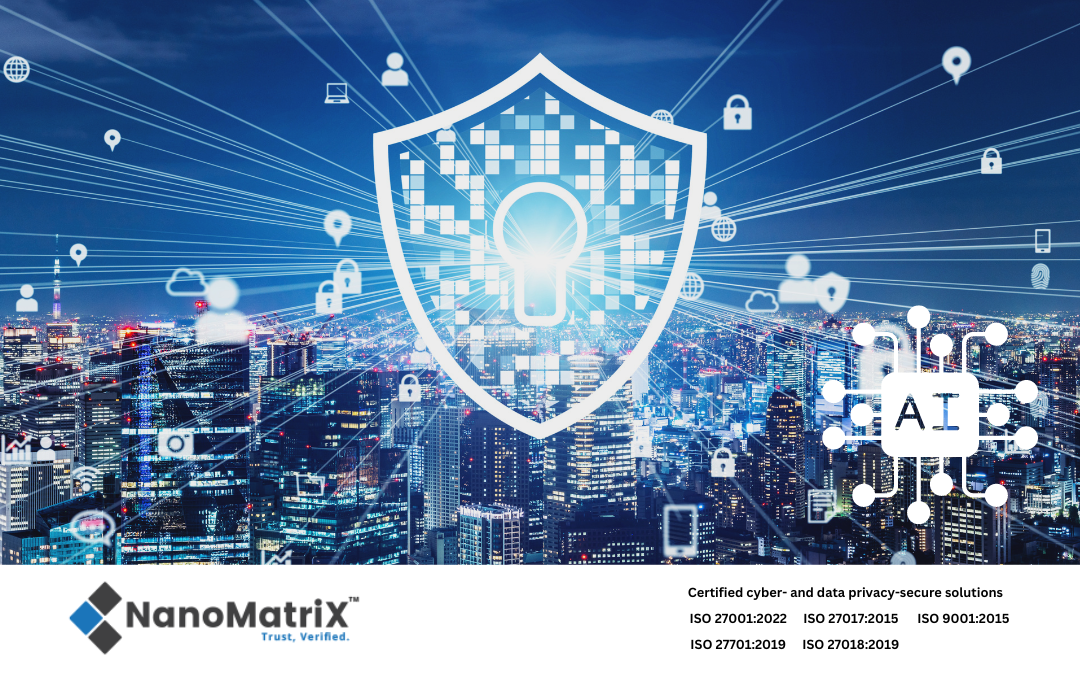











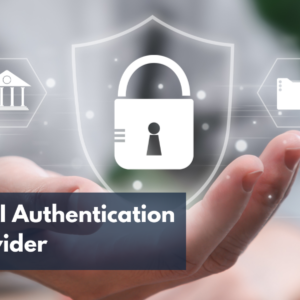
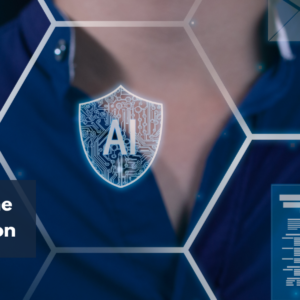
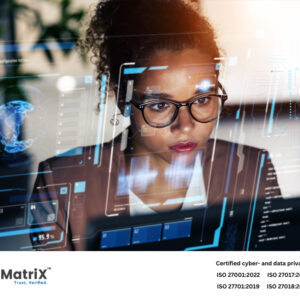

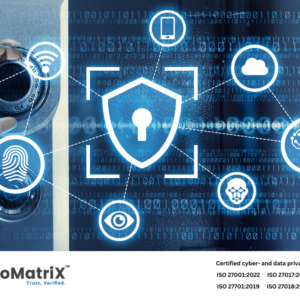
Recent Comments